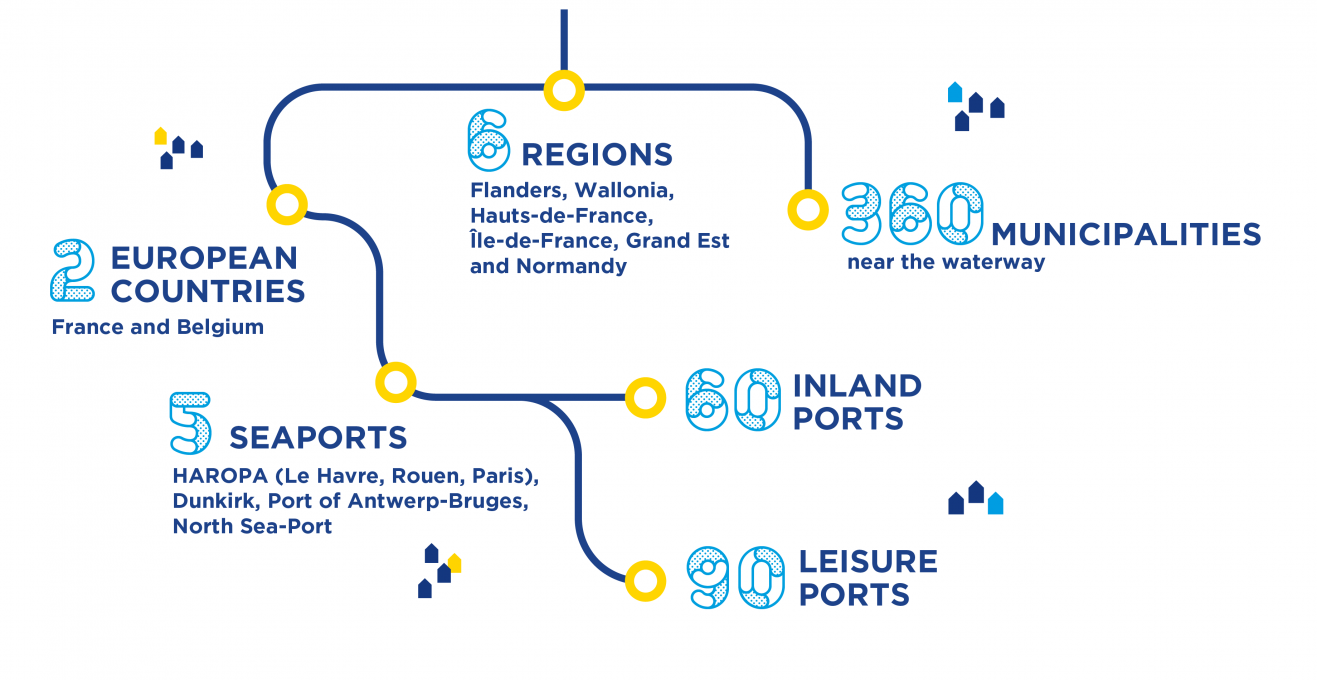SEINE-SCHELDT IS AN AMBITIOUS PROJECT
- Creating a new transport offer for Europe that is multimodal, cross-border, coherent, inter-connected, comprehensive, accessible, modern, safe, clean and efficient, which will speed up modal shift to waterways.
- Contributing to the sustainable development of the European Union by supporting the major changes taking place in member countries: mobility of the future, economic growth, ecological transition.
Seine-Scheldt is about creating a network of 1,100 km of wide-gauge waterways to link up :

SEINE-SCHELDT WILL BE OPERATIONAL IN 2030 THANKS TO :
- An extensive programme of work launched in France and Belgium to regenerate, extend and modernise existing waterways that will be connected to the Seine-Nord-Europe Canal.
- The construction of a new river infrastructure, the Seine-Nord Europe Canal, which will connect the Seine basin to the Scheldt basin as well as to other major European basins (Meuse, Rhine).
40 MILLION EUROPEANS AFFECTED
The Seine-Scheldt network will run through a territory that includes several large cities where 40 million people live and work, and will open up a new gateway to Europe for the trade of goods and the transport of passengers.
A MAJOR CHALLENGE: SPEEDING UP THE MODAL SHIFT TO WATERWAYS
In the early 2000s, awareness of the impact of land and air transport on the climate and the planet (carbon footprint, noise pollution, congestion, insecurity, etc.) led European territories to incorporate waterways into the heart of their approach to cooperation once again.
The challenge involved speeding up the modal shift towards river transport against a backdrop of the rise in trade and traffic. The Seine-Scheldt network must respond to this challenge. It is the centrepiece of the North Sea-Mediterranean Corridor, one of the 9 multimodal corridors that should enable the development of a core trans-European multimodal transport network by 2030.
